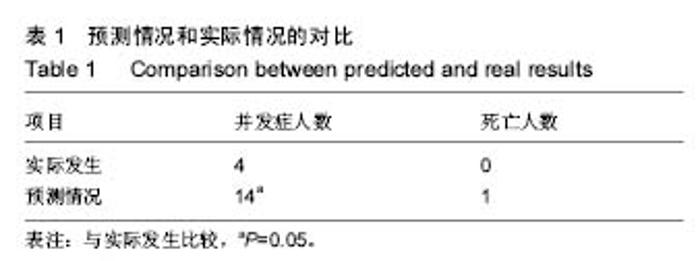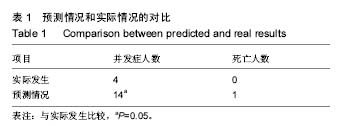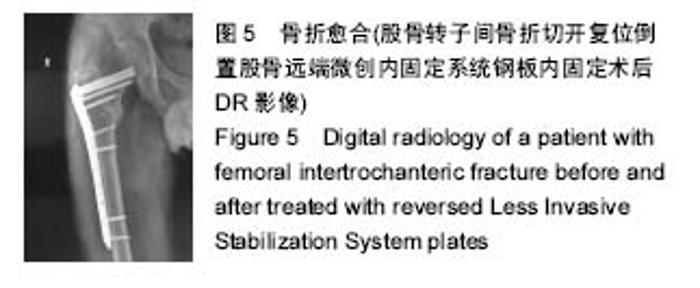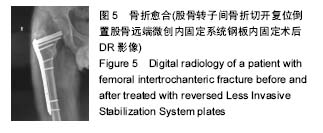| [1] 胥少汀,葛宝丰,徐印坎,等.实用骨科学[M].4版.北京:人民军医出版社,2012.[2] Thomas PR, Richard EB, Christopher GM. AO principles of fractureman agement[M] 2nd ed 上海:科学技术出版社, 2010: 560[3] 张英泽.临床创伤骨科流行病学[M].北京:人民卫生出版社,2014. 168-184.[4] Chow L, Chow TW, Chai J, et al. Bone stability around implants in elderly patients with reduced bone mineral density -a prospective study on mandibular overdentures. Clin Oral Implants Res. 2016 Jun 29.[5] de Jonge EA,Rivadeneira F,Erler NS,et al.Dietary patterns in an elderly population and their relation with bone mineral density: the Rotterdam Study. Eur J Nutr. 2016 Aug 24. [Epub ahead of print].[6] 石涛,张立海,陈华,等.髋部骨折的性别及年龄分布分析[J].解放军医学院学报, 2013, 34(1):58-59.[7] 张长青.关于老年股骨转子间骨折的当代观点[J].中华骨科杂志,2012, 32(7):611-613.[8] Chehade MJ,Carbone T,Awward D,et al.Influence of Fracture Stability on Early Patient Mortality and Reoperation After Pertrochanteric and Intertrochanteric Hip Fractures. J Orthop Trauma.2015;29(12):538-543.[9] Lin PC, Chang SY. Functional recovery among elderly people one year after hip fracture surgery.Nurs Res.2004;12: 72-82.[10] 张伟强,祁宝昌,邓鹏飞,等. 老年股骨粗隆间骨折治疗的临床进展[J] 中国老年学杂志. 2015,35(1): 1005-9202.[11] Chen Y,Liu S,Lin P,et al. Comparative biomechanical study of reversed less invasive stabilization system and proximal femoral nail antirotation for unstable intertrochanteric fractures. Chin Med J (Engl) .2014;127( 23) :4124-4129.[12] 金东旭,孙张. 倒置股骨远端微创内固定系统接骨板治疗老年股骨转子间骨折[J] .中华创伤骨科杂志. 2011;13(3): 208-211.[13] Marti A, Fankhauser C, Frenk A,et al. Biomechanical evaluation of the less invasive stabilization system for the internal fixation of distal femur fractures. J Orthop Trauma. 2001;15: 482-487.[14] 周方,张志山,田云,等. 微创内固定系统治疗复杂股骨转子部骨折的初步报告[J]. 中华创伤骨科杂志,2006,8(12):1113-1117.[15] 孙源,张长青,金东旭,等. 倒置股骨远端微创内固定系统接骨板治疗老年股骨转子间骨折[J].中华创伤骨科杂志,2011;03: 208-211.[16] Tao R, Lu Y, Xu H, et al.Internal fixation of intertrochanteric hip fractures: a clinical comparison of two implant designs. ScientificWorldJournal.2013;2013: 834825.[17] Yao C,Zhang CQ,Jin DX,et al.Early results of reverse less invasive stabilization system plating in treating elderly intertrochanteric fractures: a prospective study compared to proximal femoral nail.Chin Med J (Engl). 2011;124: 2150-2157.[18] 王云清,王爱国,朱长喜,等.不同内固定方法治疗老年股骨粗隆间骨折疗效观察[J] 现代中西医结合杂志,2014,22(31): 3468-3470.[19] Zhou F,Zhang ZS,Yang H,et al. Less invasive stabilization system (LISS)versus proximal femoral nail anti-rotation(PFNA)in treating proximal femoral fractures:a prospective randomized study. JOrthop Trauma.2012;26(3):155-162.[20] Tang SL,Jiang C. Comparison of the effect of inverted less invasive stabilization system(LISS)and proximal femoral nail anti-rotation(PFNA)in the treatment of complex unstable intertrochanteric fracture in aged. Zhongguo Gu Shang. 2011;24(5):366-369.[21] Lin SJ,Huang KC,Chuang PY,et al. The outcome of unstable proximal femoral fracture treated with reverse LISS plates. Injury.2016;47(10):2161-2168.[22] 张国如,陈锡森. 动力髋内固定治疗股骨粗隆间骨折的疗效分析[J]. 军医进修学院学报,2010,31(8):786-787.[23] Copeland GP, Jones D, Walters M. POSSUM: a scoring system for surgical audit. Br J Surg.1991;78: 355-360.[24] Whiteley MS, Prytherch DR, Higgins B, et al. An evaluation of the POSSUM surgical scoring system.Br J Surg.1996;83: 812-815.[25] Midwinter MJ, Tytherleigh M, Ashley S. Estimation of mortality and morbidity risk in vascular surgery using POSSUM and the Portsmouth predictor equation. Br J Surg.1999;86: 471-474.[26] Ying L, Bo B, Huo-Yan W,et al. Evaluation of a Modified POSSUM Scoring System for Predicting the Morbidity in Patients Undergoing Lumbar Surgery.Indian J Surg. 2014;76: 212-216.[27] Mohamed K ,Copeland GP ,Boot DA ,et al.An assessment of the POSSUM system in orthopaedic surgery.J Bone Joint Surg Br.2002 ;84(5):735-739 .[28] Wright DM, Blanckley S, Stewart GJ, et al. The use of orthopaedic POSSU M as an audit tool for fractured neck of femur. Injury.2008;39(4):430-435.[29] Ramanathan TS, Moppett IK, Wenn R, et al. POSS M scoring for patients with fractured neck of femur.Br J Anaesth. 2005; 94(4):430-433.[30] 张博皓. 改良生理学和手术严重度评分系统(POSSUM )预测髋部骨折手术并发症发生率及死亡率的价值[D]. 长春:吉林大学,2004. |



